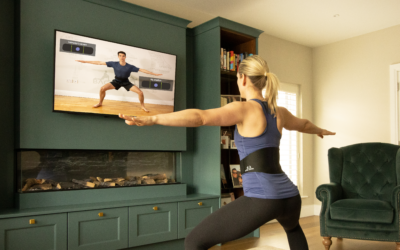When it comes to designing an effective exercise program for the back, it’s crucial to adopt a joint-by-joint approach. This approach recognizes that different areas of the body have specific functional demands and require targeted attention. In the case of the back, it is essential to address both core stability and hip mobility. By prioritizing these two key areas, we can promote a healthy and pain-free back, improve overall movement quality, and enhance athletic performance. In this article, we will explore the significance of core stability and hip mobility in back health and discuss exercises that can help achieve optimal function. This article will discuss the importance of Hip mobility for back pain and give specific back exercises to help.
Understanding the Joint-by-Joint Approach:
The joint-by-joint approach, popularized by physical therapist Gray Cook and strength coach Mike Boyle, emphasizes the concept that certain joints require stability, while others necessitate mobility. In the context of the back, the lumbar spine (lower back) benefits from stability, while the adjacent joints, such as the hips, require mobility. By maintaining this delicate balance, we can reduce the strain on the back and promote optimal movement patterns.
The Role of Core Stability:
Core stability plays a pivotal role in protecting the spine and maintaining proper alignment. The core muscles, including the deep abdominal muscles, obliques, and back muscles, work together to provide stability and support to the lumbar spine. Engaging and strengthening these muscles through specific exercises, such as planks, superman, and deadbugs, helps create a solid foundation for the back and prevents excessive movement and strain during daily activities or exercise.
The Significance of Hip Mobility:
Hip mobility is closely interconnected with back health. Limited hip mobility often leads to compensatory movements in the lumbar spine, causing excessive stress and potential injury. By enhancing hip mobility, we can ensure that the hips can move freely through their full range of motion, relieving the burden on the lower back. Exercises like hip flexor stretches, deep squats, and hip rotations can improve hip mobility and reduce strain on the lumbar spine.
Exercise Recommendations for Core Stability and Hip Mobility:
- Plank Variations: Planks engage the entire core, promoting stability. Start with a basic plank and progress to side planks and plank variations on unstable surfaces for an added challenge.
- Hip Flexor Stretches: Stretching the hip flexors, such as the kneeling lunge stretch, helps alleviate tightness and improve hip mobility.
- Glute Bridges: Glute bridges activate the posterior chain and promote hip extension, strengthening the glutes while improving hip mobility.
- Deep Squats: Deep squats encourage hip mobility and engage the core. Focus on maintaining a neutral spine while performing squats to avoid excessive strain on the lower back.
- Deadbugs: Deadbugs target core stability by challenging the deep abdominal muscles and their connection with the back muscles.
Conclusion:
Adopting a joint-by-joint approach when considering exercises for the back is essential for promoting optimal back health. Prioritizing core stability and hip mobility allows for improved movement patterns, reduced strain on the lumbar spine, and enhanced overall function. With our Back Pilates program we really focus on exercises that strengthen the core and promote hip mobility, so that we can safeguard the back, prevent injuries, and maximize performance in daily activities and athletic pursuits. Remember to consult with a qualified healthcare or fitness professional to ensure proper form and progression when implementing these exercises into your routine.
For a free trial of back pilates or to learn more visit https://backawarebelt.com/backpilates










